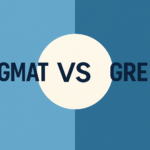Last year the price per share of Company A’s stock… is a pretty frustrating little question.
That’s because this GMAT question is extra-sneaky in its wording. Make sure that you’re being careful about what is what. I personally recommend writing down all of your values relative to the original value, perhaps in a table.
Last year the price per share of Company A’s stock on March 31 was 25 percent higher than its price per share on March 1. By April 30 the stock’s price per share was 20 percent lower than the price per share on March 1. What was the percent decrease in price per share of the stock from March 31 to April 30?
A. 5%
B. 25%
C. 36%
D. 45%
E. 56%
Let’s start with the earliest value by date: if we call the value on 1 March X, then we have a table that looks like this with 25% more than X on 31 March and 20% less than X on 30 April.
(Note how all the values are relative to the original X: this is decidedly NOT saying that we take 20% less than the value on 31 March. This is usually how people trip on this question.)
The next logical step is to put these numbers into fractions because they’ll be easier to deal with.
At this point, we need to find the percent decrease from 31 March to 30 April, so from 5/4*X to ⅘*X. That sure is a nifty solution to Last year the price per share or similar questions when they pop up on the test.
This will be much easier if we do it with fractions, of course. Then you can play with it like this (note that if you choose not to cancel, you’ll get everything over 100 so you’re automatically dealing with percentages).
Remember, to find a percent increase/decrease, you simple need this:
change/initial * 100 = (final – initial)/initial*100
NB: There’s no reason to use a different equation for Percent Increase and one for Percent Decrease. Just calculate with the change and if you answer is positive, it’s an increase. If it’s negative, it’s a decrease.
Simple as that.
It’s your solution to Last year the price per share of Company A’s stock on the GMAT practice test!






